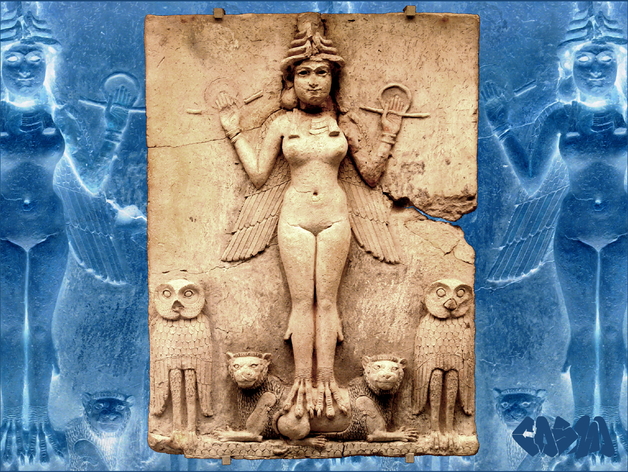
The Queen of the Night
thingiverse
From the British Museum Scanned by Cosmo Wenman, http://cosmowenman.com Also known as The Burney Relief. Old Babylonian, 1800-1750 BC From southern Iraq A major acquisition for the British Museum's 250th anniversary Material: Baked straw-tempered clay Height: 49.500 cm Width: 37.000 cm Thickness: 4.800 cm (max.) British Museum Object Number: ME 2003-7-18,1 Room 56: Mesopotamia Scanned by Cosmo Wenman using Autodesk 123D Catch at The British Museum, London, August 2012. For more information about this work visit: http://www.britishmuseum.org/explore/highlights/highlight_objects/me/t/queen_of_the_night_relief.aspx From the British Museum: "This large plaque is made of baked straw-tempered clay, modelled in high relief. The figure of the curvaceous naked woman was originally painted red. She wears the horned headdress characteristic of a Mesopotamian deity and holds a rod and ring of justice, symbols of her divinity. Her long multi-coloured wings hang downwards, indicating that she is a goddess of the Underworld. Her legs end in the talons of a bird of prey, similar to those of the two owls that flank her. The background was originally painted black, suggesting that she was associated with the night. She stands on the backs of two lions, and a scale pattern indicates mountains. The figure could be an aspect of the goddess Ishtar, Mesopotamian goddess of sexual love and war, or Ishtar's sister and rival, the goddess Ereshkigal who ruled over the Underworld, or the demoness Lilitu, known in the Bible as Lilith. The plaque probably stood in a shrine. The same goddess appears on small, crude, mould-made plaques from Babylonia from about 1850 to 1750 BC. Thermoluminescence tests confirm that the 'Queen of the Night' relief was made between 1765 and 45 BC. The relief may have come to England as early as 1924, and was brought to the British Museum in 1933 for scientific testing. It has been known since its publication in 1936 in the Illustrated London News as the Burney Relief, after its owner at that time. Until 2003 it has been in private hands. The Director and Trustees of the British Museum decided to make this spectacular terracotta plaque the principal acquisition for the British Museum's 250th anniversary." http://bit.ly/dyP0wd 3,800 years old. Unbelievable. I've uploaded my unedited Catch file, an .stl of the complete object set to 1:1 scale with the original, and a .zip archive with the object cut into 8 pieces, for printing full scale on a Replicator2. I haven't had a chance to print this myself yet, so I can't vouch for how it will turn out. (Though I think it will print nicely.) I oriented the pieces upright, with some pieces upside down, to eliminate the need for external supports. It should print OK hollow too. But if you're going to print solid or with infill, it migh turn out better if you lay the pieces flat, and print at a high resolution. Cosmo Wenmanhttp://www.cosmowenman.comhttp://twitter.com/cosmowenman Thanks to AP for the suggestion.
With this file you will be able to print The Queen of the Night with your 3D printer. Click on the button and save the file on your computer to work, edit or customize your design. You can also find more 3D designs for printers on The Queen of the Night.
